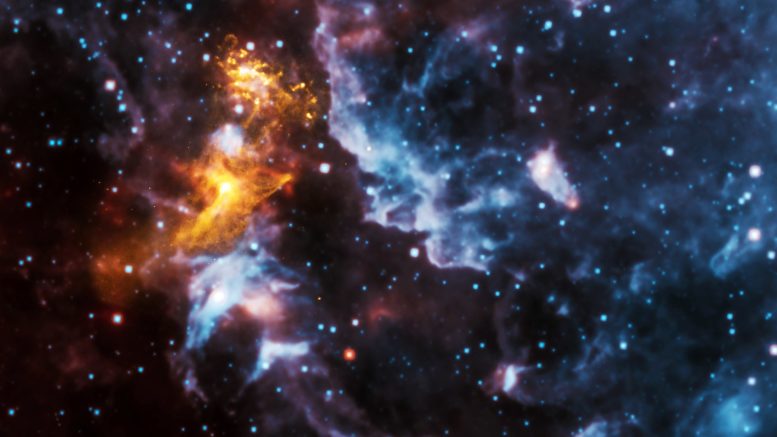Welcome to the introduction to the topic of neutron stars. This article will be more of a general overview to provide a sense of what these objects are, how they form, and where they reside.
Neutron Stars are some of the most fascinating objects in the galaxy as they are the collapsed core of a giant star which before collapse had a total mass of between 10 and 29 solar masses. Of all the celestial objects in the universe, except black and white holes, they are the smallest and densest type of star with a radius of around 10 kilometers or 6.2 miles, and a mass of about 1.4 solar masses. A neutron star is created as a result from the supernova explosion of a massive star, which is combined with a gravitational collapse, that compresses the core past white dwarf star density to that of atomic nuclei.
Once formed, neutron stars no longer actively generate heat, and cool over time; however, they may still evolve further through collision or accretion. Most of the basic models for these objects imply that neutron stars are composed almost entirely of neutrons; the electrons and protons present in normal matter combine to produce neutrons at the conditions in a neutron star. Neutron stars are partially supported against further collapse by neutron degeneracy pressure, but if not enough mass is upheld, then a collapse into a black hole is possible.
With a surface temperature of around 60000 K, neutron stars that can be observed are very hot and are so dense that a normal-sized matchbox containing this material would have a weight of approximately 3 billion tonnes, the same weight as a 0.5 cubic kilometer chunk of the Earth from Earth’s surface.[1]
As the star’s core collapses, its rotation rate increases as a result of conservation of angular momentum, and newly formed neutron stars hence rotate at up to several hundred times per second. Some emit beams of electromagnetic radiation that make them detectable as pulsars. This can be seen with the discovery of pulsars by Jocelyn Bell Burnell and Antony Hewish in 1967 was the first observational suggestion that neutron stars exist. The radiation from pulsars is thought to be primarily emitted from regions near their magnetic poles.
Estimates have provided scientists with the idea of the potential of 100 million neutron stars in the Milky Way, which was based upon the number of stars that have undergone supernova explosions. Astronomers and scientists have observed a total of about 2,000 known neutron stars in the Milky Way and the Magellanic Clouds. The majority of these stars were detected as radio pulsars. For those neutron stars that reside in the Milky Way, these objects are mostly concentrated along the disk, although they are spread perpendicular to the disk because the supernova explosion process can impart high translational speeds to the newly formed neutron star.
It is possible for exoplanets to reside around these objects, which can come in the form of originally orbiting the star, circumbinary, captured, or the result of a second round of planet formation.
Resources And Further Research Topics
[1] = Tour the ASM Sky”. heasarc.gsfc.nasa.gov.

Be the first to comment on "Neutron Stars"